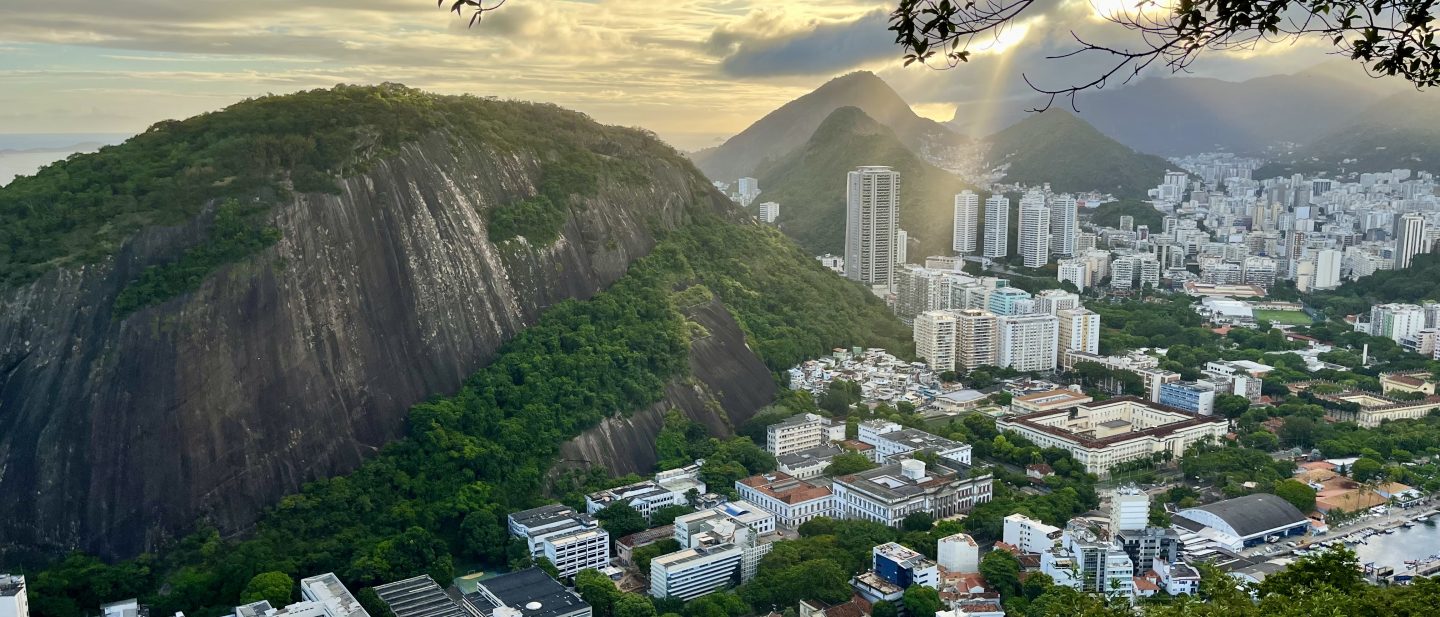
Following Dr. Nicole Labruto and Dr. Jerry Burgess’ course in the fall — Food, Energy, Water, and Power in the Global South: An Interdisciplinary Approach (AS.271.306) — a group of professors and students traveled to Brazil during winter intersession to witness the themes that were explored in the classroom. From January 3-20, the group visited Rio de Janeiro, the Pantanal, and Iguazu Falls, among other locations. It is an upper-level undergraduate course within the AS Department of Earth and Planetary Sciences and cross-listed with the Program in Medicine, Science, and the Humanities.
Allison Lorentz, a senior from California studying Environmental Science and International Studies, participated in the class. We sat down with Allison, Dr. Labruto, and Dr. Burgess to learn more about the course and their trip to Brazil:
What can students expect to learn from this class?
During the fall semester, the course focused on analyzing issues and themes related to food, energy, water, and power from a Global South perspective.
“We taught this course with thematic topics, so when we were in Brazil, we were able to see a lot of them in action,” says Dr. Labruto. “We went to different sites, many of which we had studied in the semester, to investigate and talk with experts on site.”
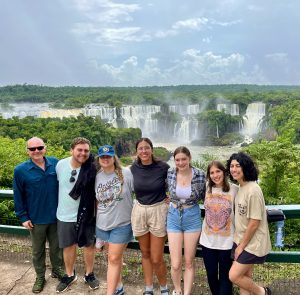
“We can learn from afar about these things, but then to see them put into practice, to learn from various kinds of expertise while in Brazil, was really remarkable,” says Dr. Labruto.
The class first spent roughly seven days in Rio de Janeiro, where they saw medicinal and edible plants at a botanical garden and met with an ethnobotanist who discussed her work in local communities that involved healing with plants. They also visited Vale Encantado, the most sustainable favela in Brazil, toured a sanitation treatment facility to learn about waste processing in the city, and saw endangered wildlife at a golden lion tamarin reserve. The group hiked through the city, as well, and learned about local flora, fauna, and geology from Dr. Burgess.
Next, the class spent roughly five days in the Pantanal area — a natural region that contains the world’s largest tropical wetlands and flooded grasslands.
“When we got to the Pantanal, we were looking at a wetland ecosystem, but we were also looking at food systems,” says Dr. Burgess. “We were on a working agricultural ranch, and so we were looking at livestock and food issues, as well as climate change adaptation and mitigation.”
Anything we were doing was incorporating historical analysis into the present, looking at how decisions have been made and how people have been adversely affected by them.”
In the final three days of the trip, the class visited Iguazu to witness the Itaipu Dam — the largest hydroelectric dam in the world. The group received a technical tour of the dam, met with the scientific director of Iguazu National Park, and met local academics who work on the triple border frontier.
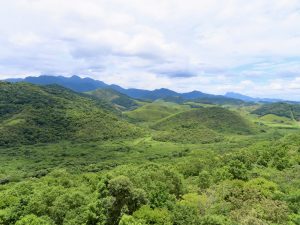
“Throughout the course, we didn’t just look at power structures or class structures or energy distribution,” says Dr. Burgess. “We tried to look at everything in a holistic systems-level perspective.”
At each destination, the class brought knowledge learned from the fall course to local knowledge learned, all within the greater context of the broader course themes.
“Having an analysis of history and power that was brought through the course enabled us to see the environmental ramifications in real life,” says Dr. Labruto. “Anything we were doing was incorporating historical analysis into the present, looking at how decisions have been made and how people have been adversely affected by them.”
How would you describe the class to students interested in taking it?
In Brazil, Allison found that the most meaningful experiences came from observing and speaking organically with locals. “I thought that was most valuable — just learning from people we ran into,” she says.
Allison reflects on the class’ visit to the Itaipu Dam, and compares it to a debate that the class held in the fall portion of the course. The debate taught the students about the environmental impacts of the dam, its history and construction, and the international conflicts related to it. “To then visit the dam, witness its scale, and hear the different perspectives of employees, local scholars, and the class’ tour guide, was interesting,” Allison says.
It felt like such a rural place, but we could still deeply see the human impact.”
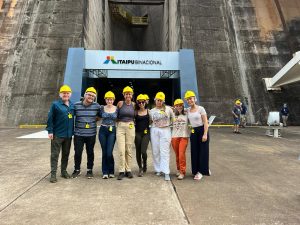 “Our tour guide told us about the economic and environmental destruction [caused by the dam],” says Allison. “It was very clear that his perspective was not the same as those working at Itaipu.”
“Our tour guide told us about the economic and environmental destruction [caused by the dam],” says Allison. “It was very clear that his perspective was not the same as those working at Itaipu.”
For Allison, the highlight of the trip was visiting the Pantanal.
“It felt like such a rural place, but we could still deeply see the human impact,” she says. “Whether that was in the pastures for cows and horses, or in sewage being pumped out through a pipe [on the river].”
What motivated you to teach this class?
Dr. Labruto and Dr. Burgess share interests in the realms of food, energy, plants, agriculture, and sustainability, among other topics. Much of Dr. Labruto’s anthropological and scientific research takes place in Brazil, so combining this research experience in the region with both professors’ shared interests led to the formation of the course.
“We were able to bring [our interests] together from different points of view and different perspectives,” says Dr. Labruto. “It was wonderful to be in dialogue on topics of science, policy, history, and power.”
What motivated you to take this class?
“I am interested in environmental policy and advocacy,” says Allison. “Learning about the food, energy, and water nexus is critical to that. It was really interesting to [learn about] from an approach that was more globally focused.”
In particular, Allison was interested in learning about the dynamics between the Global South and the Global North. The mesh of scientific and anthropological perspectives brought together by Dr. Burgess and Dr. Labruto offered a unique opportunity to learn about such dynamics, she says.
What broader themes do you hope that students take away from this class?
“Some of us come from challenged upbringings and backgrounds, but we are still privileged when it comes to most of the rest of the Global South,” says Dr. Burgess. “Seeing how decisions are made initially through our own eyes, but then trying to get students to see through another lens, was something we were conscious of in our intentional way that we went about the field portion of the course.”
Dr. Labruto echoes this. “Efforts of sustainability and environmentalism are uneven,” says Dr. Labruto. “Taking students to Brazil and seeing that conveyed this point — that there is an incredible economic, social, and political diversity to how sustainability efforts play out, and to how environmentally-oriented practices and decisions are implemented, and the effects they have.”
What has surprised you most about taking this course?
When the group first arrived in Rio de Janeiro, Allison says she was shocked by the greenery of the downtown area. The streets, she says, were covered with trees and flowers.
“I said at one point: ‘This is what a city should be,’” says Allison.
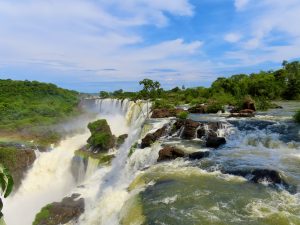
The contrast between the favela communities and this lush downtown area was most shocking to Allison.
“The inequality was so stark,” she says. “Nowhere is free from that. There are people that don’t have access to clean water, and people who don’t have trees where they live because everything has been deforested.”
You could just see the impact that humans have on each other and the surrounding environment.”
This inequality was further emphasized at the Itaipu Dam, says Allison. “You could just see the impact that humans have on each other and the surrounding environment.”